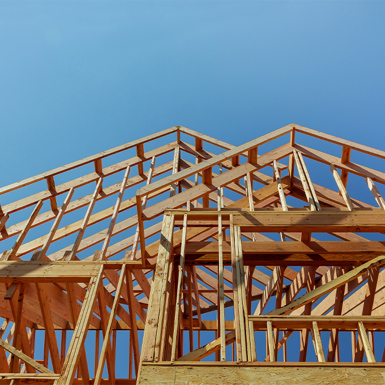10 Considerations for Quoting Builders Risk Insurance
When preparing to secure builders risk coverage, it is essential to ask the right questions about the client’s project to have a clear understanding of the protection that is needed. This list is not all-inclusive, but these questions will help you narrow in on the scope of coverage to quote.
- What makes this project unique?
No two construction projects are exactly the same, and the same holds true for insurance coverage for those projects. Builders risk insurance needs to be tailored to the project’s specific risks. Forms, coverage limits and endorsements will vary; it is the agent’s job to help the client identify specific exposures of the project. - What are the insurance requirements of the construction contract?
The key to an effective policy is to understand the details of the construction contract. The insurance section of the contract specifically outlines the coverage required. A secondary consideration is the indemnity section, which establishes the parties responsible for losses that could occur during the construction process. - What specifications are listed in the lender's requirement?
Another area of consideration is the client’s contractual obligations under financing documents. The lender's requirements component of the financing contract specifically list what insurance coverage the lender requires. This can differ from requirements in the construction contract. - What is the definition of covered property as it pertains to this specific policy?
The covered property component of builders risk insurance must be specified as well. The building is one component, but the policy can cover fixtures and materials to be installed as well. It can also include or exclude additional areas including temporary structures, scaffolding, underground works, materials in transit, and more. - Is a waiver of subrogation needed?
Some construction contracts include waiver of subrogation clauses. With a waiver of subrogation, a contractor can avoid being responsible for a loss that occurs prior to completion to the extent that insurance covers the loss. Every party must agree to waive their rights of subrogation against the other contractually, and the waiver is often limited to the extent the damage is covered by insurance. - What are the considerations for soft costs?
Soft cost is an expense that’s not considered a direct construction cost. The most common types of soft cost expenses are legal and accounting fees, design and consulting costs, real estate and property taxes, advertising and promotional fees, inspection fees and insurance premium. These expenses would have been incurred and could reoccur after a loss. - Who is named as the insured?
It's important to clarify this information is based on the specifications of the policy. Commonly, the building owner or contractor is the party to purchase builders risk coverage. However, other parties may be listed as additional insureds. - What does covered locations mean?
It may seem simplistic that the builders risk policy should specify the location of the covered property. However, many builders risk policies extend coverage to the property in transit and property temporarily at other locations. - What exclusions are applicable?
Most builders risk policies have exclusions - these simply make sense. Some of the more common exclusions include money on the site, landscape, contractor's tools and related equipment, and vehicles. - When does coverage end?
Outline key triggers that will lead to a ceasing of coverage. What specifically is applicable here varies by project. A common inclusion is requirements for occupancy that state coverage ceases at the time occupancy takes place (and is defined as whether that includes in whole or in part). If there is some potential for occupancy during construction, insurers often require a permit to occupy to safeguard risks. For installation coverage the coverage could cease once the materials are installed.
Armed with the answers to these 10 questions, agents will be better prepared to write more effective builders risk policies, better meeting clients’ coverage needs. To learn more about the basics of builders risk, download From Groundbreaking to Remodeling: Builders Risk 101 Guide.
Break Down Builders Risk and Understand the Basics
Builders risk can be a confusing topic, but US Assure can help. From Groundbreaking to Remodeling: Builders Risk 101 Guide will help you master the basics. Download now to learn more about the risks involved and how to choose the coverage that is best for you.
Download










